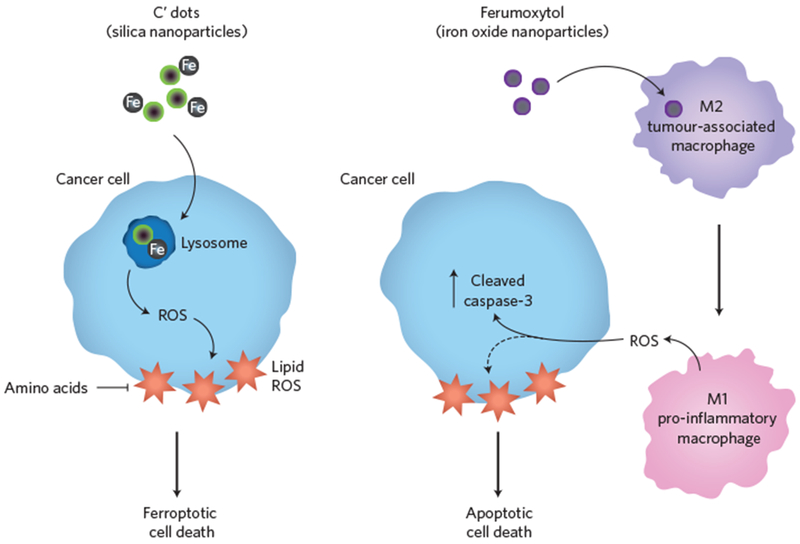Figure 1 |.

Engineered nanoparticles kill cancer cells by manipulating iron levels and causing an accumulation of reactive oxygen species. Bradbury, Overholtzer and co-workers demonstrated that ultrasmall silica nanoparticles (C′ dots) are selectively lethal to cancer cells (blue) under conditions of amino acid starvation (left). Cell death occurs by ferroptosis — a non-apoptotic form of cell death, resulting from the iron-dependent production of reactive oxygen species (ROS). Daldrup-Link and colleagues showed that the FDA-approved iron oxide nanoparticle drug, ferumoxytol, alters the polarization of tumour-associated macrophages from an anti-inflammatory M2 phenotype to a pro-inflammatory M1 phenotype (right). M1 polarized macrophages potentially release ROS and/or additional diffusible factors, one or more of which may induce apoptotic cell death characterized by an increase in cleaved caspase-3.
